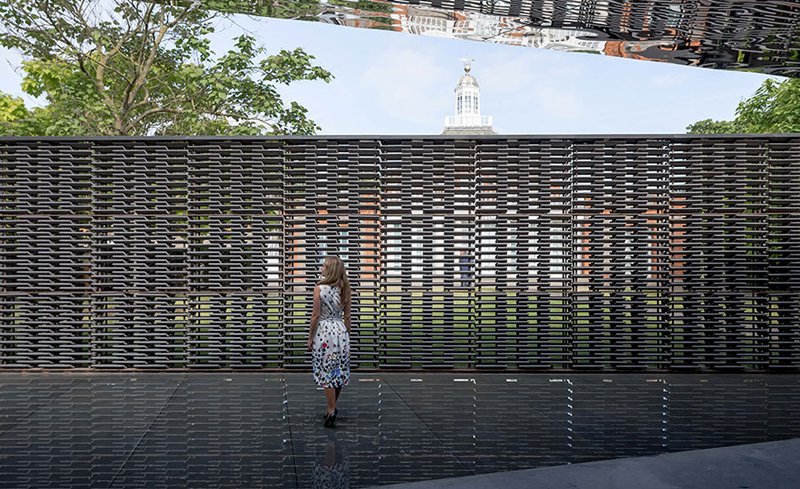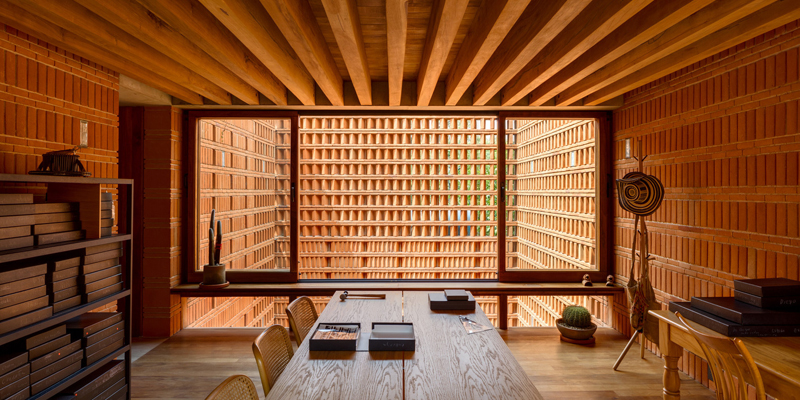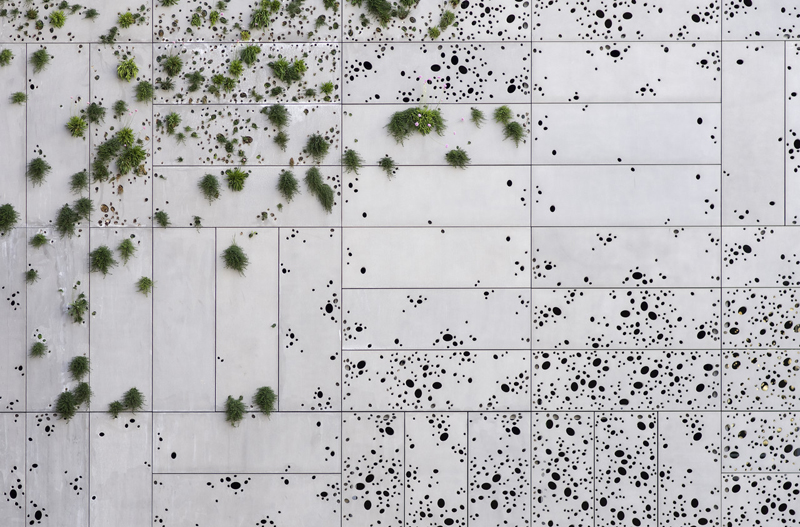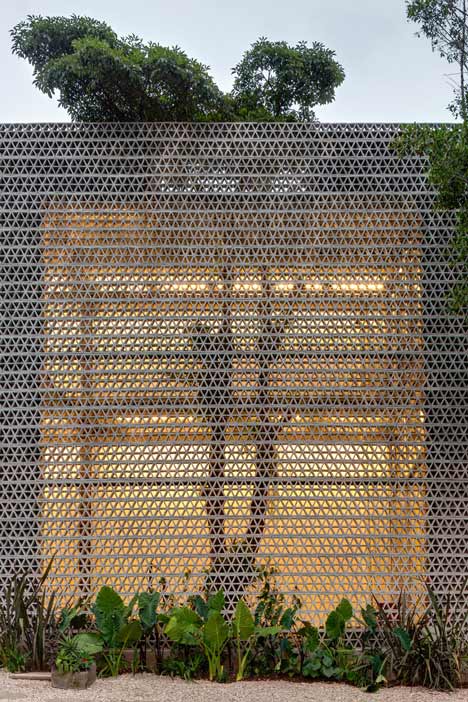Screens and walls are some the most useful and attractive elements that make up buildings, as well as open space. They perform multiple functions such as privacy, visual interest, and most importantly, protection from the weather. Today we shine a light on Spain and Mexico, where builders and designers have learned to deal with abundant sun exposure by using shade screens. While it is easy to find highly ornate and intricate walls that date back hundreds of years, contemporary designers continue to be influenced by this tradition, utilizing simple materials that are arranged and articulated in highly creative and sophisticated ways.
The images we are sharing today exemplify how the repetition of a single element can create exciting effects and textures that add interest and beauty to a space.

Frida Escobedo’s 2018 Serpentine Pavilion highlights the clever array of British concrete roof tiles to create “a woven tapestry” of semi-porous screens to create an intimate interior courtyard that retains a relationship to its context. Photo by Iwan Baan

Mauricio Rocha’s Casa Iturbide is made up of walls composed of local brick arranged in different ways to create walls of varying texture and porosity. Photo by Ben Sklar

Nieto Sobejano’s addition to the San Telmo Museum features a façade articulated by perforated steel sheets that create a lively pattern when light shines through them, as well as have the ability to grow plants, creating a softer, semi-green wall. Photo by Stefan Tuchila

Another Frida Escobedo project, La Tallera Gallery is encased by perforated concrete walls that create semi-translucent screens, revealing an exquisite courtyard from the outside, while at the same time providing privacy from surrounding streets. Photo by Rafael Gamo

AF6 constructed shade screens out of the repetition of four different sizes of hollow ceramic pieces to shield this Ceramic Centre’s interior from the sun. Photo by AF6 Arquitectos




